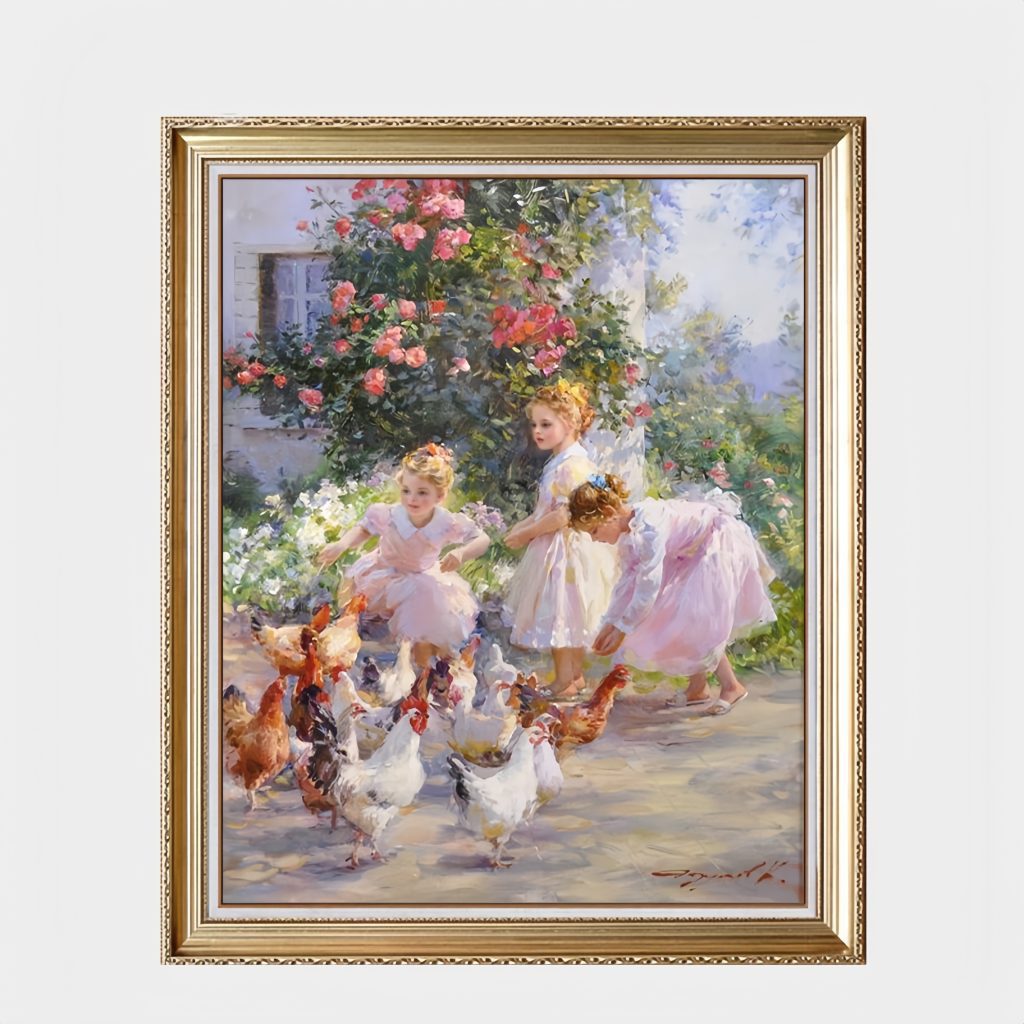Determining the composition of hand-drawn oil paintings is a crucial step in creating outstanding works. The following is a detailed introduction for you from several aspects, including preliminary thinking, composition methods, element layout, and adjustment and optimization:
Preliminary thinking
Clarify the theme and emotion: Before starting the composition, it is necessary to be clear about the theme and emotion that the painting intends to express. For instance, if the theme is the serene rural scenery, then the composition should create a peaceful and leisurely atmosphere. If one wants to express a tense and exciting battle scene, the composition should be full of dynamism and conflict. After clarifying the theme and emotion, the subsequent selection and layout of composition elements can revolve around this core.
Analyze the audience and purpose of the picture: Consider for whom this oil painting was created and its purpose. If it is a decorative painting created for children, the composition can be more lively, the colors brighter, and the elements more childlike. If it is an art piece for exhibition, the composition may need to be more profound and unique to attract the audience’s attention and prompt them to think.
Selection of composition methods
The rule of thirds: Divide the picture into three equal parts in both the horizontal and vertical directions to form a nine-square grid. Place the important elements of the picture, such as the main figure and key scenes, at the dividing lines or the intersections of the dividing lines. This can make the picture more balanced and attractive. For instance, when painting a landscape oil painting, one can place the distant horizon in the upper or lower one-third of the picture, and put the main trees or buildings at the intersection points to give the picture a sense of layering and visual focus.
Symmetrical composition: Taking the center line of the picture as the axis, the elements on the left, right or top and bottom sides are basically symmetrical in terms of shape, size, color, etc. This composition method can create a sense of solemnity, stability and harmony, and is often used to depict subjects such as architecture and portraits. For instance, when painting an ancient church, using symmetrical composition can highlight the solemnity and sanctity of the church.
Leading line composition: By using lines in the picture, such as roads, rivers, Bridges, etc., it guides the viewer’s gaze to move towards the main subject or important elements of the picture. The leading lines can be straight lines, curves or broken lines, which can enhance the depth and spatial sense of the picture. For instance, when painting a winding country path, if the path extends from one corner of the picture to the main house, the viewer’s gaze will naturally focus on the house along the path.
Triangular composition: Arrange the main elements in the picture in a triangular shape. Triangles have stability and an upward dynamic effect. The equilateral triangle composition can give people a sense of stability and solemnity. The inverted triangle composition gives a sense of instability and dynamics. The diagonal triangular composition combines stability and dynamism. For instance, when drawing a group of people, arranging their heights in a triangular pattern can make the picture more vivid and layered.
Element layout arrangement
Highlight the main element: Determine the main element of the picture and place it in a prominent position. Through contrast techniques such as size, color, and light and shade, distinguish the main element from other elements. For instance, when painting an oil painting with flowers as the theme, the flowers can be made larger and more brightly colored than the surrounding leaves and background, thereby highlighting the main subject.
Proper density: Arrange the density relationship of elements in the picture reasonably to avoid overly uniform or crowded distribution of elements. Some detailed elements can be appropriately added around the main subject, but the quantity and density should be well controlled to highlight the main subject. At the edges or in the blank areas of the picture, you can leave some space appropriately to make the picture more breathable. For instance, when painting a still life oil painting, there can be some scattered leaves or small objects around the main fruit as embellishments, but not too many, so as not to affect the expression of the main subject.
Front and back layers: By varying the size, position, and reality of elements, a sense of front and back layers in the picture is created. The nearby elements can be drawn larger, clearer and with brighter colors. The elements in the distance are drawn smaller, more blurry and in darker colors. For instance, when painting a landscape oil painting, the nearby mountains can be depicted as tall and clear, while the distant ones gradually become smaller and blurrier, creating a sense of space between near and far.
Adjust and optimize the composition
Overall review: After completing the initial composition, take a few steps back and review the picture as a whole to check if the composition is balanced and harmonious, if the theme is prominent, and if the layout of elements is reasonable. Check if there are any overly crowded or empty areas in the picture, and if the positions or sizes of any elements need to be adjusted.
Listen to opinions: Show your composition sketches to others, such as friends, colleagues or art lovers, and listen to their opinions and suggestions. Different people may have different perspectives and opinions. Their feedback can help you discover the problems you have overlooked during the composition process.
Repeated revisions: Based on reviews and others’ opinions, repeatedly revise the composition. Don’t be afraid to make changes. Sometimes, just a small adjustment can make the picture look brand new. During the modification process, it is important to maintain the consistency of the overall style and theme of the picture.
